
Code:Realize ~Guardian of Rebirth~ is the story of a young woman, Cardia Beckford, who is left alone in a mansion by her father. He tells her she cannot leave and that she must never know love because she is a monster. Her touch is a corrosive poison that melts anything she comes into contact with save the specially designed sheets and clothing her father crafted for her. One day, her father is supposed to come back for her, but before that happens, Queen Victoria’s soldiers arrive to take her away.
She’s stolen from them by none other than master thief Arsène Lupin, who brings her into his gang of friends who are hunting for Cardia’s father, legendary scientist Isaac Beckford. Cardia decides to join them rather than go back to the mansion, so she can learn more about herself, the strange gem embedded in her body in place of a heart, and to find her father.
Code:Realize is set in an alternate Victorian England, powered by steam-driven technology, and Lupin’s group is composed of literary figures who supposedly lived in that time period. So Cardia ends up rubbing shoulders with Victor Frankenstein, Count Saint-Germain, and Impey Barbicane. (I had to look up Impey, who apparently is from a Jules Verne novel From the Earth to the Moon.) Abraham van Helsing joins them shortly afterward.
The show also features other literary cameos such as Captain Nemo and Herlock Sholmes (the “getting around copyright” adversary of Arsene Lupin), making it fun to watch for period fans, as long as one doesn’t expect too much historical accuracy. Even Queen Victoria herself has a sizeable role.
Cardia’s father isn’t just the greatest inventor in the history of Britain, he’s also suspected of being behind a terrorist plot, and a mysterious organization known as Twilight is after Cardia, led by none other than a boy claiming to be her brother.
Though her companions get some time in the limelight, the anime keeps the story focused around Cardia, her discovery of Isaac’s true plans, her budding sense of self, and her growing trust and affection towards Lupin. All this happens in a steampunk world full of cars, trains, airship races, government conspiracies, and mad alchemy. But even though the story is imaginative, it doesn’t quite come to life, and I think it’s due to the series’ struggle with its roots.
Code:Realize is based on an otome visual novel, so in the source material the player is Cardia and she pursues a romance with one of the men, so all five are young, single, and good-looking irrespective of how old they should be at this point in history.
It’s a really good otome, where the rest of the story is just as engaging as the romance, making an anime adaptation an excellent chance to pull in a crossover audience. Unfortunately the anime doesn’t go for that and positions itself as a more traditional reverse harem show where one girl is surrounded by a group of guys who all like her, rather than a badass group of friends who are trying to help one of their own (which is closer how it feels in the game, ironically enough).
It might be due to the run time constraints, but a lot of the banter between the different men is missing in the anime, making them seem more like work partners rather than true companions. This flattens their characterization and makes their strongest bond through Cardia rather than each other, which doesn’t feel convincing when most of them don’t get enough time to fall in love with her either.
This weakens the run up to the finale, when Cardia and her five friends are supposed to be working as a cohesive unit. The series actually has a fairly action-oriented second half, with London under siege due to an insurrection. We know the six of them are supposed to be composed of battle-tested friends, because they’ve been together since the start of the show and they’ve done some jobs together, but we don’t feel it, which is too bad because the last two episodes are otherwise pretty good.
Both in the game and the anime, Cardia starts off the story as an emotionless doll due to her isolation, but as time goes on she starts to display more of a will of her own. She never gets as expressive as in the game, which will probably be the biggest disappointment for fans of the original, but even as muted as she is, she’s still better than the average otome heroine, and the animation staff lets Cardia fight for herself in combat so she avoids the standard heroine helplessness for the genre. Her battle choreography isn’t particularly great to look at, but it’s about par for the course for the rest of the cast.
Despite the loss of characterization, the anime otherwise does an extremely good job of adapting the game. This is no mean feat considering that a single playthrough is about 15 hours long and most of that time is spent reading. Though it was a given that the anime would follow Lupin’s storyline, since he’s the series’ poster boy, there are a lot of details from the other romance routes that are necessary to understand the story as a whole, and the show manages to weave them in. This allows things like Saint-Germain’s backstory to work when it wouldn’t have if the script had scrupulously stuck to Lupin’s in-game storyline.
The adapted script is also unafraid of moving plot moments to different places in chronology or different locations from the original. Frankenstein, who was originally not part of Lupin’s gang, is already with the group by the time Cardia meets him, speeding up what was originally a much slower start to the story. Some element of cutting and rearrangement was expected, but Code:Realize does it a lot and remarkably without losing a single plot thread. Events might not occur exactly as in the game, but the story remains intact.
In the end, Code:Realize is perfectly viewable version of the source material, even without being a prior fan, but as an adaptation it has a lot of flaws in what was otherwise a promising premise. My feeling is that the adaptation writer was trying so hard to make the plot fit in the time allowed that characterization fell to the wayside in favor of leaning on common otome anime tropes instead of what made Code:Realize unique among its peers.
Number of Episodes: 12
Pluses: Entertaining steampunk worldbuilding, smart adaptation to condense the source material into 12 episodes without losing much of the plot, Cardia is not as helpless as typical for otome protagonists
Minuses: Characters are fairly flat across the board, series wants to be a simple reverse harem romance but can’t get away from the source material’s action scenes, combat choreography is subpar
Code:Realize ~Guardian of Rebirth~ is currently streaming at Crunchyroll (subtitled), Funimation (dubbed). Funimation has licensed this for eventual retail distribution in the US.

Laurie Tom is a fantasy and science fiction writer based in southern California. Since she was a kid she has considered books, video games, and anime in roughly equal portions to be her primary source of entertainment. Laurie’s short fiction has been published in Galaxy’s Edge, Strange Horizons, and Intergalactic Medicine Show.

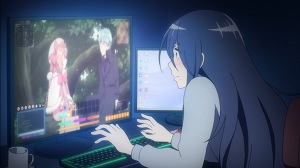



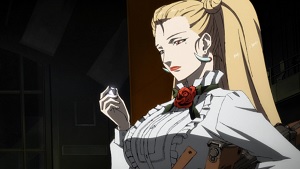
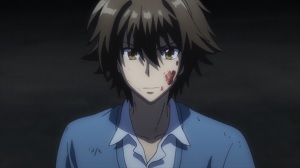




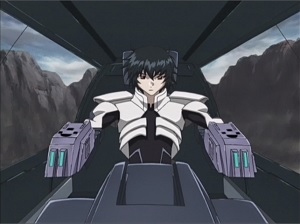 Fafner: Right of Left wasn’t available to English speaking audiences for a long time. Animated back in 2005, it’s the second oldest entry in the long running Fafner series, but never made it stateside, likely due to its status as a direct-to-video prequel.
Fafner: Right of Left wasn’t available to English speaking audiences for a long time. Animated back in 2005, it’s the second oldest entry in the long running Fafner series, but never made it stateside, likely due to its status as a direct-to-video prequel.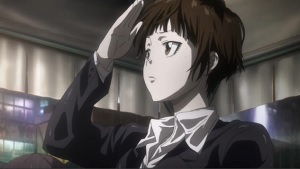 Psycho-Pass is an original self-contained anime from 2012 that I missed during initial broadcast. I’m generally not a big cyberpunk dystopia fan, so I only came back when I kept hearing about it. This review covers the first series, which is stand-alone.
Psycho-Pass is an original self-contained anime from 2012 that I missed during initial broadcast. I’m generally not a big cyberpunk dystopia fan, so I only came back when I kept hearing about it. This review covers the first series, which is stand-alone.